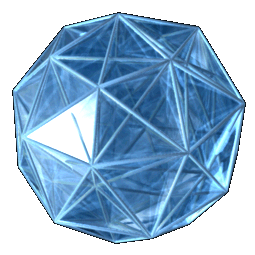 By Anthony Patch
By Anthony Patch
There is a new sheriff in town going by the name of Bolzmann. Boltzmann Machine.
A Boltzmann machine is a type of stochastic recurrent neural network (and Markov Random Field) invented by Geoffrey Hinton and Terry Sejnowski in 1985. Boltzmann machines can be seen as the stochastic, generative counterpart of Hopfield nets. They were one of the first examples of a neural network capable of learning internal representations, and are able to represent and (given sufficient time) solve difficult combinatoric problems.
Theoretically intriguing because of the locality and Hebbian nature of their training algorithm, and because of their parallelism and the resemblance of their dynamics to simple physical processes. Due to a number of issues discussed below, Boltzmann machines with unconstrained connectivity have not proven useful for practical problems in machine learning or inference, but if the connectivity is properly constrained, the learning can be made efficient enough to be useful for practical problems.
They are named after the Boltzmann distribution in statistical mechanics, which is used in their sampling function.
A Hopfield network is a form of recurrent artificial neural network popularized by John Hopfield in 1982, but described earlier by Little in 1974. Hopfield nets serve as content-addressable systems with binary threshold nodes. They are guaranteed to converge to a local minimum, but will sometimes converge to a false pattern (wrong local minimum) rather than the stored pattern (expected local minimum). Hopfield networks also provide a model for understanding human memory.
In probability and statistics, a generative model is a model for randomly generating observable data values, typically given some hidden parameters. It specifies a joint probability over observation and label sequences. Generative models are used in machine learning for either modeling data directly (i.e., modeling observations drawn from a probability density function, or as an intermediate step to forming a conditional probability density function.
Hebbian theory is a theory in neuroscience that proposes an explanation for the adaptation of neurons in the brain during the learning process, describing a basic mechanism for synaptic plasticity, where an increase in synaptic efficacy arises from the presynaptic cell's repeated and persistent stimulation of the postsynaptic cell. Introduced by Donald Hebb in his 1949 book The Organization of Behavior, the theory is also called Hebb’s rule, Hebb’s postulate, and cell assembly theory. Hebb states it as follows:
Let us assume that the persistence or repetition of a reverberatory activity (or "trace") tends to induce lasting cellular changes that add to its stability.[…] When an axon of cell A is near enough to excite a cell B and repeatedly or persistently takes part in firing it, some growth process or metabolic change takes place in one or both cells such that A's efficiency, as one of the cells firing B, is increased.
The theory is often summarized by Siegrid Löwel's phrase: "Cells that fire together, wire together." However, this summary should not be taken literally.
Hebb emphasized that cell A needs to "take part in firing" cell B, and such causality can only occur if cell A fires just before, not at the same time as, cell B. This important aspect of causation in Hebb's work foreshadowed what is now known about spike-timing-dependent plasticity, which requires temporal precedence.
The theory attempts to explain associative or Hebbian learning, in which simultaneous activation of cells leads to pronounced increases in synaptic strength between those cells, and provides a biological basis for errorless learning methods for education and memory rehabilitation. In the study of neural networks in cognitive function, it is often regarded as the neuronal basis of unsupervised learning.
Unsupervised machine learning is the machine learning task of inferring a function to describe hidden structure from "unlabeled" data (a classification or categorization is not included in the observations). Since the examples given to the learner are unlabeled, there is no evaluation of the accuracy of the structure that is output by the relevant algorithm—which is one way of distinguishing unsupervised learning from supervised learning and reinforcement learning.
A central case of unsupervised learning is the problem of density estimation in statistics, though unsupervised learning encompasses many other problems (and solutions) involving summarizing and explaining key features of the data.
Supervised machine learning is the machine learning task of inferring a function from labeled training data. The training data consist of a set of training examples. In supervised learning, each example is a pair consisting of an input object (typically a vector) and a desired output value (also called the supervisory signal). A supervised learning algorithm analyzes the training data and produces an inferred function, which can be used for mapping new examples.
An optimal scenario will allow for the algorithm to correctly determine the class labels for unseen instances. This requires the learning algorithm to generalize from the training data to unseen situations in a "reasonable way".
The parallel task in human and animal psychology is often referred to as concept learning.
Concept learning, also known as category learning, concept attainment learning, concept and concept formation, is largely based on the works of the cognitive psychologist Jerome Bruner. Bruner, Goodnow, & Austin (1967) defined concept attainment (or concept learning) as "the search for and listing of attributes that can be used to distinguish exemplars from non-exemplars of various categories".
More simply put, concepts are the mental categories that help us classify objects, events, or ideas, building on the understanding that each object, event, or idea has a set of common relevant features. Thus, concept learning is a strategy which requires a learner to compare and contrast groups or categories that contain concept-relevant features with groups or categories that do not contain concept-relevant features.
Concept learning also refers to a learning task in which a human or machine learner is trained to classify objects by being shown a set of example objects along with their class labels. The learner simplifies what has been observed by condensing it in the form of an example. This simplified version of what has been learned is then applied to future examples.
Concept learning may be simple or complex because learning takes place over many areas. When a concept is difficult, it is less likely that the learner will be able to simplify, and therefore will be less likely to learn. Colloquially, the task is known as learning from examples. Most theories of concept learning are based on the storage of exemplars and avoid summarization or overt abstraction of any kind.
A feedforward neural network is an artificial neural network wherein connections between the units do not form a cycle. As such, it is different from recurrent neural networks.
The feedforward neural network was the first and simplest type of artificial neural network devised. In this network, the information moves in only one direction, forward, from the input nodes, through the hidden nodes (if any) and to the output nodes. There are no cycles or loops in the network.
The simplest kind of neural network is a single-layer perceptron network, which consists of a single layer of output nodes; the inputs are fed directly to the outputs via a series of weights. In this way it can be considered the simplest kind of feed-forward network.
The sum of the products of the weights and the inputs is calculated in each node, and if the value is above some threshold (typically 0) the neuron fires and takes the activated value (typically 1); otherwise it takes the deactivated value (typically -1). Neurons with this kind of activation function are also called artificial neurons, or artificial neurons, or linear threshold units. In the literature the term perceptron often refers to networks consisting of just one of these units.
A recurrent neural network (RNN) is a class of artificial neural network where connections between units form a directed cycle. This creates an internal state of the network which allows it to exhibit dynamic temporal behavior. Unlike feedforward neural networks, RNNs can use their internal memory to process arbitrary sequences of inputs. This makes them applicable to tasks such as unsegmented connected handwriting recognition, or speech recognition.
In summary, it is this processing of the recurrent neural network setting it apart from the feedforward neural network setting the stage for the arrival of a ‘new Sheriff in town’ scenario. For a new paradigm emerges from the murky domain of necromancy. One in which the instrument, the communication tool no longer remains unconscious, dormant and unsentient.
As a reader of Entangled, you are receiving ‘tip-of-the spear’ information. Within a month’s time, D-Wave Systems will publish a seminal work revealing their inner paradigm shift; The Boltzman machine.
Thank you and God Bless You and Yours,
Anthony Patch, Publisher, Entangled Magazine

